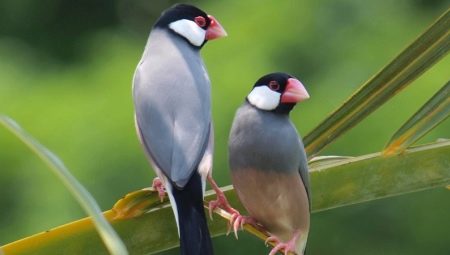Rice Amadins are small but very beautiful birds. These are wild creatures, but at home, with proper care, they feel great. A distinctive feature of this type is loud melodic singing. What else is remarkable for these birds and how to keep them in captivity, the article will tell.
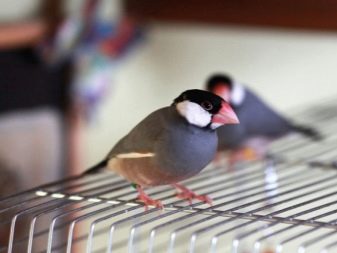
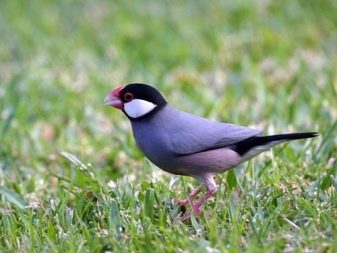
Description
Rice Amadina (Rice) - the most famous and popular variety of its kind. For the first time, birds were discovered on the islands of Bali and Java. Many fields here are planted with rice, which feathered feasts. This explains their name. In winter, the drawings live in gardens and groves, where they feed on various seeds. But with the onset of spring, they again switch to their favorite rice. As a rule, in nature, birds live in pairs or small families.
The most common type of color is ashen. Such sketches have a contrasting black and white pattern on the head. At the same time, their cheeks are snow-white, and the crown is as if covered with a dark cap. The part of the head under the red beak is also dark. On the stomach, you can see pale gray feathers. Sometimes they have a pinkish or beige hue. The back, sides and chest have a more saturated gray color with a pearl shimmer. The tail is almost black, and the area under the tail is completely white.
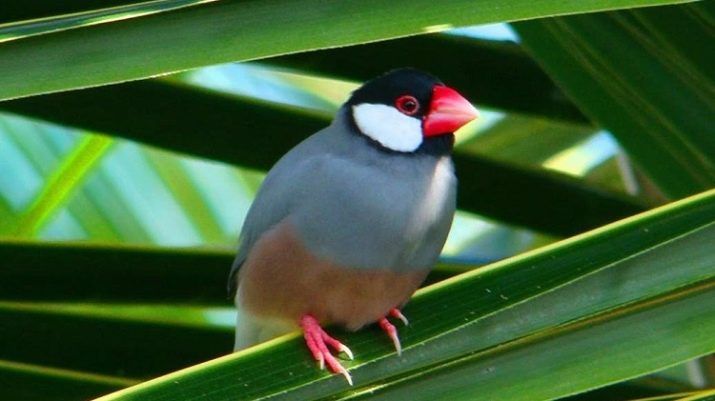
Some sketches have snow-white feathers all over their bodies. This spectacular species was developed by man. Moreover, the “whiteness” gene is dominant. Therefore, when crossing individuals of natural (gray) color and snow-white birds, most of the chicks turn out to be white. Interestingly, light specimens are more stress resistant. In addition, they multiply more actively and produce large offspring.There are also rare color options - for example, birds with silver pale gray feathers and a white belly.
All options are beautiful in their own way and find their fans. It is worth considering that the color of the plumage and beak changes slightly as they grow older. The individual acquires the final version of the “outfit” by 4 months. It is noteworthy that the color of males and females is almost the same, while in many birds the males are more beautiful. This makes drawing even more welcome pets.
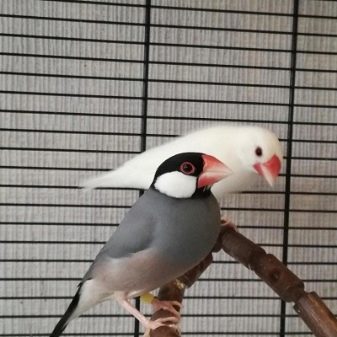
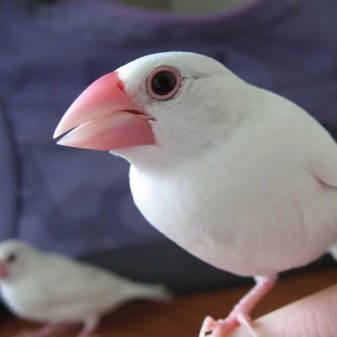
Determining the gender of rice amadina is not easy. This can only be done by comparing a few individuals.
Males are distinguished by a slightly larger beak with a “hump”. They also have larger heads, unlike graceful females. A few words are worth saying about the sounds. The fact is that only males sing. They begin to give concerts when they reach 4 months. The singing is melodic, but quite loud and frequent. When buying, consider this point.

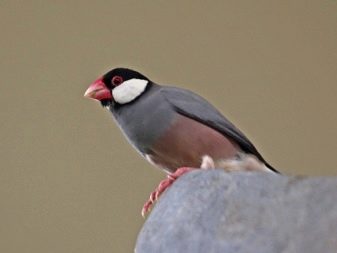
Growing conditions
For home maintenance, a couple of about the same age is chosen. It is worth noting that it is better to cross birds from different families. Otherwise, the offspring will be weak. You can contact different breeders. When choosing, give preference to moving birds with clean plumage. The room in which the birds will live should be warm and bright. The optimum temperature regime is from 22 to 30 C. The cell should be spacious. During the mating season, it should organize several nesting places (open and closed) - so the birds will have a choice. These birds build nests from branches, tree shoots, moss, hay. Cotton wool, threads and rags cannot be used. The pet will become entangled in such a nest that could result in personal injury.
For the proper development of the paws and a good mood, the risoks need poles made of wood or plastic. The optimal diameter of the product is 1.5-2 cm. For a pair of birds, two pieces installed at different heights are sufficient.
The presence of a mineral stone in the cell is also necessary. It gives the birds beneficial substances and allows you to grind the beak.
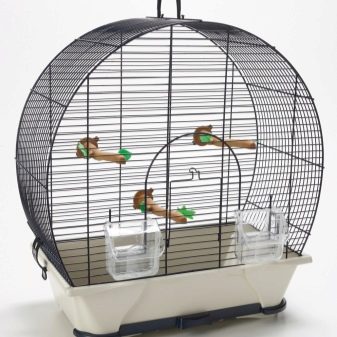

Proper care
It is better not to let the birds out of the cage. Feeling freedom, the Amadins begin to fuss and randomly fly around the room. This could lead to an accident. In addition, these birds are very shy. Due to some loud sound, they may hide behind furniture or in another hard-to-reach place. But the Amadins love to swim. Be sure to put a container in the cage for taking water procedures. The water in it should be changed daily. Periodically you need to carry out cleaning in the cage. Washing the pallet and changing the bedding material should be done every day. The cage should be washed completely once a week.
At the time of harvesting the rice you need to transplant. To do this, you should buy a small spare cage. The latter may be useful in other situations. For instance, When buying a new bird, keep it away from other birds for about a month.
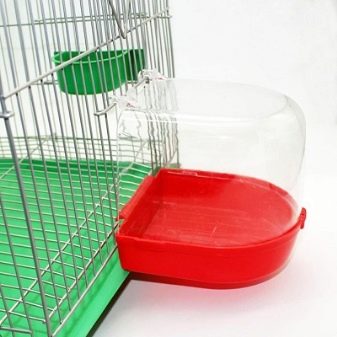
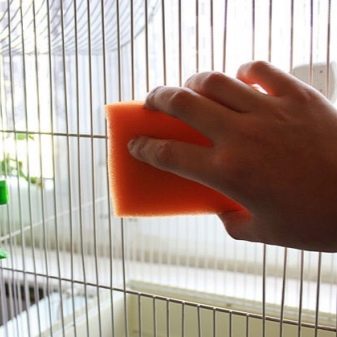
It will be useful for hatching chicks, and for their subsequent planting. Remember that if you leave fledged adult birds with their parents, they can start a struggle for territory.
It is important to carefully monitor the status of feathered pets. If necessary, claws should be cut to them, although these birds do not really like contact with humans. If you find any ailments in the sketches, you need to seek help from a specialist.


What and how to feed?
Rice amadines are fed with a grain mixture intended for exotic birds. You can buy such food in a specialized store. Some other products are added to the grains. The diet of birds can include sunflower seeds, chopped boiled eggs and rice, as well as cottage cheese. As for vegetables, you can sometimes give feathered cucumber. It is forbidden to feed amadine with onions and dill.
During the period of nesting, hatching eggs and feeding offspring, protein products give rice every 2 days (you can daily).The rest of the time, protein enrichment is performed a couple of times a week. Also, during the breeding season, amadins need mineral fertilizing with gravel content. Top dressing can be poured into a separate container or added to the grain. Be sure to provide the birds with clean drinking water. You need to change it every day. In summer (especially on hot days) it is better to replace the water twice a day.
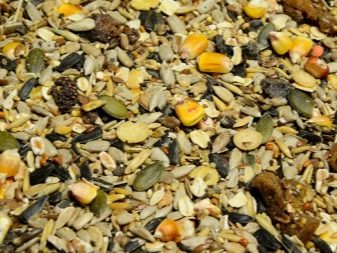

Breeding
If you buy birds for breeding, keep in mind that only individuals older than one year of age can reproduce. The signal for the start of mating games is the installation of nests, which have already been mentioned. As the latter, you can use baskets of vines. Even a small plywood box without a lid will do. It is only necessary to cut a recess for laying at the bottom. For convenience, you need to lay hay or coconut fiber at the bottom of the structure.
Do not put the nest in a cage until the female reaches 1 year, as laying eggs is contraindicated for young individuals. The process can negatively affect bird health. Also, the couple should not be provoked to breed during the molting period. At this time, the female’s body is weakened, therefore, reproduction can become a great stress for her. It is easy to understand that the Amadins are ready to mate. The male begins to show off in front of his girlfriend, perform mating dances, spreading feathers. The female will respond to attention with a light whistle and energetic behavior. The couple "talks" with each other, shows increased excitability, tearing napkins and other bedding material.
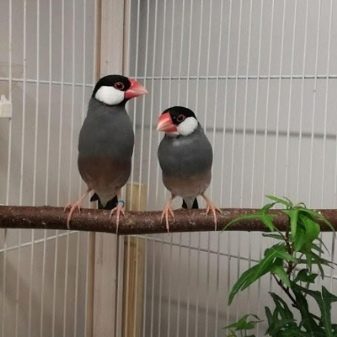
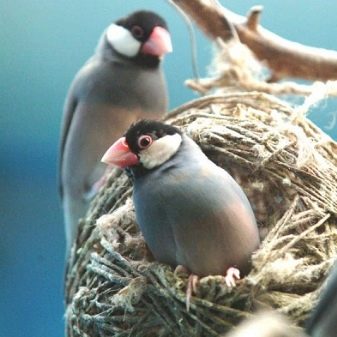
One week after mating, eggs are laid. Usually their number is from 3 to 7 pieces. When a female and a male take turns hatching offspring, it is important to maintain silence in the room. To approach the cell once again is not worth it. Contraindicated to a young mother and drafts. The temperature in the room should in no case fall below 20 C. It is also desirable to ensure good air humidity - this will not allow the shell to become too dry.
After 2 weeks, chicks appear. A couple of weeks they learn to fly. Upon reaching 1.5 months, young birds become independent. You can place them in another cage.
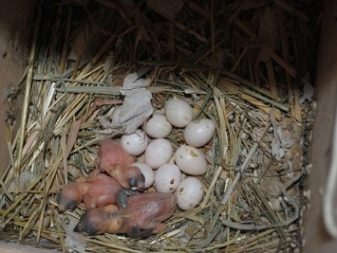
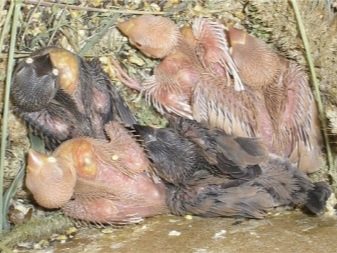
In the next video, you will find more information about rice amadina.
